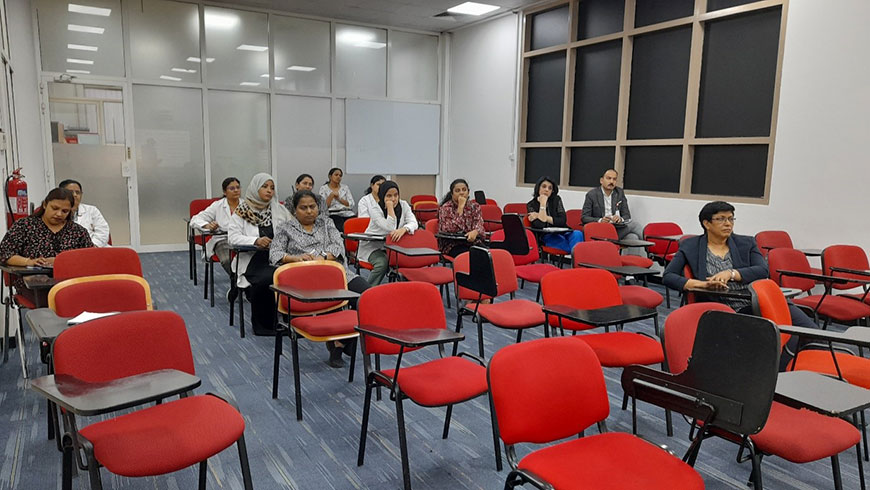Item analysis is a crucial component of the assessment process, playing a pivotal role in evaluating the quality and effectiveness of test items. It involves the systematic examination and evaluation of test items (questions) to gather information about their performance characteristics and how well they contribute to the overall assessment. With this regard, College of Nursing organized a Faculty Development Workshop titled ‘Interpretation of Item Analysis’, on December 11th, 2023, between 3.30-4.30pm. The session was delivered by Prof. Salah Eldin Kassab, Associate Dean of Academics & Professor of Physiology and Medical Education, College of Medicine, GMU.

The workshop was attended by 13 faculty members from College of Nursing and College of Medicine. Prof. Salah’ credentials in the field of educational assessment and psychometrics added credibility to the content presented. Faculty members benefited from his practical insights and real-world examples, making the workshop relevant and engaging.
Prof. Salah delivered a thorough presentation on various item analysis types, encompassing Difficulty Index, Discrimination Index, Point Biserial, and Distractor Analysis. He clarified that the Difficulty Index is computed by dividing the number of students who answered the item correctly by the total number of students. This index serves as a measure to evaluate the overall difficulty of an item. In contrast, the Discrimination Index evaluates the item’s capacity to differentiate between high- and low-performing students.
Additionally, Prof. Salah focused on the Distractor analysis which involves evaluating the effectiveness of each distractor by determining how often it is chosen by students. Effective distractors should be chosen by a reasonable number of students who do not know the correct answer. If a distractor is rarely or never chosen, it may need revision.

The workshop included interactive sessions, encouraging participants to actively engage with the material. Prof. Salah utilized a combination of lecture, group discussion, and practical exercises to facilitate a dynamic learning environment. Participants were specifically prompted to analyse and interpret selected items, encouraging the direct application of the learnt concepts to their teaching practices.
The session was extremely beneficial, and the faculty participated actively by asking relevant questions and clarifications.

